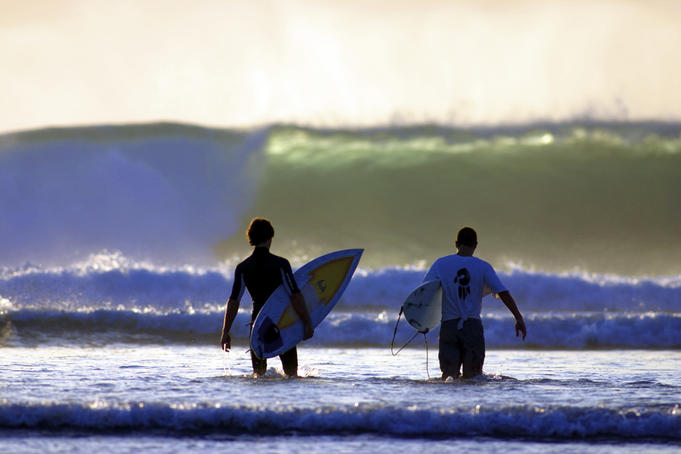Saat ini, harga LCD TV sudah sangat murah dibandingkan dengan beberapa LCD generasi awal. Namun bagaimana memilih sebuah LCD TV yang cost-effective ?. Sebenarnya tidak sulit mencari LCD TV berkualitas dan optimal. Kuncinya adalah mengetahui fungsi dari spesifikasi yang ditawarkan oleh sebuah LCD TV. Nah, untuk mempermudah Anda mengambil keputusan dalam memilih LCD TV mana yang akan Anda bawa pulang, berikut kami berikan tips-tipsnya.
High Definition TV (HDTV)
Salah satu alasan orang beralih dari TV konvensional ke LCD TV adalah karena kualitas gambarnya. Dan memang LCD TV sudah terbukti mampu menampilkan gambar yang jernih, jelas, detail dengan noise yang sedikit. Anda dapat menggunakan besaran resolusi sebagai indikator untuk menentukan kualitas gambar sebuah LCD TV. Belakangan ini generasi LCD TV terbaru sudah sampai pada era High Definition Television (HDTV). Saran dari kami, carilah LCD TV yang termasuk dalam generasi ini. Resolusi tertinggi HDTV paling sedikit harus mencapai 1280 x 720 pixels sementara yang tertinggi mencapai 1920 x 1080 lines atau 1080 pixels.
Salah satu alasan orang beralih dari TV konvensional ke LCD TV adalah karena kualitas gambarnya. Dan memang LCD TV sudah terbukti mampu menampilkan gambar yang jernih, jelas, detail dengan noise yang sedikit. Anda dapat menggunakan besaran resolusi sebagai indikator untuk menentukan kualitas gambar sebuah LCD TV. Belakangan ini generasi LCD TV terbaru sudah sampai pada era High Definition Television (HDTV). Saran dari kami, carilah LCD TV yang termasuk dalam generasi ini. Resolusi tertinggi HDTV paling sedikit harus mencapai 1280 x 720 pixels sementara yang tertinggi mencapai 1920 x 1080 lines atau 1080 pixels.
Umumnya generasi HDTV yang banyak beredar punya resolusi 1366 x 768p. Burulah LCD TV yang sanggup menyediakan resolusi di level ini. Kalaupun Anda belum puas dengan resolusi sebesar ini, Anda tidak perlu khawatir. Pasalnya, beberapa manufacturer kenamaan model LG, Samsung, Sharp dan Toshiba bahkan sudah mampu memproduksi LCD dengan resolusi 1080p. Silahkan rasakan sendiri kenikmatan menonton layar LCD TV dengan resolusi sebesar ini.
Aspect Ratio
Semua bermula dari Hollywood yang ingin menarik kembali orang-orang ke bioskop dari layar TV. Maka diciptakanlah concept wide screen dengan aspect ratio 16:9. Ini jelas lebih tinggi dari TV yang waktu itu hanya 4:3. Sudah pasti orang-orang akan kembali ke bioskop akibat maneuver Hollywood ini. Sekarang ini ternyata bukan hanya layar cinema yang menggunakan concept wide screen. LCD TV pun sudah mampu menyediakan layar wide screen dengan aspect ratio selevel dengan layar cinema. Jadi pastikan Anda tidak lupa untuk memerhatikan hal ini ketika membeli LCD TV. Pastikan pula LCD TV yang Anda beli punya viewing angle up to 175 derajat agar Anda memliki keleluasaan lebih dalam menentukan sudut pandang Anda ketika menonton TV. Viewing angle yang flexible termasuk salah satu keunggulan LCD TV dibanding plasma TV.
Semua bermula dari Hollywood yang ingin menarik kembali orang-orang ke bioskop dari layar TV. Maka diciptakanlah concept wide screen dengan aspect ratio 16:9. Ini jelas lebih tinggi dari TV yang waktu itu hanya 4:3. Sudah pasti orang-orang akan kembali ke bioskop akibat maneuver Hollywood ini. Sekarang ini ternyata bukan hanya layar cinema yang menggunakan concept wide screen. LCD TV pun sudah mampu menyediakan layar wide screen dengan aspect ratio selevel dengan layar cinema. Jadi pastikan Anda tidak lupa untuk memerhatikan hal ini ketika membeli LCD TV. Pastikan pula LCD TV yang Anda beli punya viewing angle up to 175 derajat agar Anda memliki keleluasaan lebih dalam menentukan sudut pandang Anda ketika menonton TV. Viewing angle yang flexible termasuk salah satu keunggulan LCD TV dibanding plasma TV.
Response Time Rendah
Hal yang satu ini penting diperhatikan bagi Anda yang punya hobi menyaksikan olahraga yang mengutamakan kecepatan seperti Moto GP atau F1. Penggemar sepakbola juga dapat mempertimbangkan tips yang satu ini. Pilihlah LCD TV dengan response time serendah mungkin agar Anda dapat menyaksikan object yang tengah bergerak dengan kecepatan tinggi tampil tanpa bayangan atau terdapat cahaya seperti ekor komet. Saat ini kebanyakan LCD TV yang beredar di pasaran memiliki response time antara 8 hingga 12 ms. Ada juga producer yang berani memasang response time sebesar 2 ms.
Hal yang satu ini penting diperhatikan bagi Anda yang punya hobi menyaksikan olahraga yang mengutamakan kecepatan seperti Moto GP atau F1. Penggemar sepakbola juga dapat mempertimbangkan tips yang satu ini. Pilihlah LCD TV dengan response time serendah mungkin agar Anda dapat menyaksikan object yang tengah bergerak dengan kecepatan tinggi tampil tanpa bayangan atau terdapat cahaya seperti ekor komet. Saat ini kebanyakan LCD TV yang beredar di pasaran memiliki response time antara 8 hingga 12 ms. Ada juga producer yang berani memasang response time sebesar 2 ms.
Spesifikasi Tambahan
Kalau Anda sudah mendapatkan LCD TV dengan spesifikasi seperti yang disebutkan tadi, maka Anda akan mendapatkan sebuah LCD TV yang berkualitas. Namun di tengah persaingan yang sangat ketat belakangan ini, ada beberapa manufacturer yang melengkapi LCD TV keluaran mereka dengan spesifikasi tambahan untuk menarik minat konsumen. Contohnya Toshiba yang memasang mesin pintar di dua LCD TV terakhir keluaran mereka, Stasia dan Regza. Jika dalam Stasia ada meta brain, maka di Regza nama mesin diberi tambahan pro menjadi meta brain pro. Adanya mesin ini tentunya akan sangat membantu LCD dalam menciptakan kesempurnaan gambar.
Sharp juga telah memperkenalkan a New Four Wavelength yang dapat mereproduksi warna merah menyala dalam Aquos. Sama hal nya dengan Samsung yang membenamkan New Blacklight with 92% Color Gamut dalam R7 series. Penambahan spesifikasi ini tentunya akan mempengaruhi kualitas gambar LCD TV. Dan Anda tak salah jika menjatuhkan pilihan LCD TV Anda pada produk-produk seperti ini.
Kalau Anda sudah mendapatkan LCD TV dengan spesifikasi seperti yang disebutkan tadi, maka Anda akan mendapatkan sebuah LCD TV yang berkualitas. Namun di tengah persaingan yang sangat ketat belakangan ini, ada beberapa manufacturer yang melengkapi LCD TV keluaran mereka dengan spesifikasi tambahan untuk menarik minat konsumen. Contohnya Toshiba yang memasang mesin pintar di dua LCD TV terakhir keluaran mereka, Stasia dan Regza. Jika dalam Stasia ada meta brain, maka di Regza nama mesin diberi tambahan pro menjadi meta brain pro. Adanya mesin ini tentunya akan sangat membantu LCD dalam menciptakan kesempurnaan gambar.





